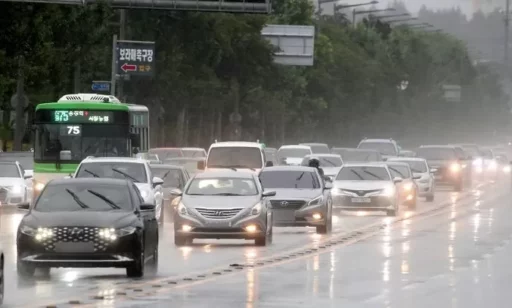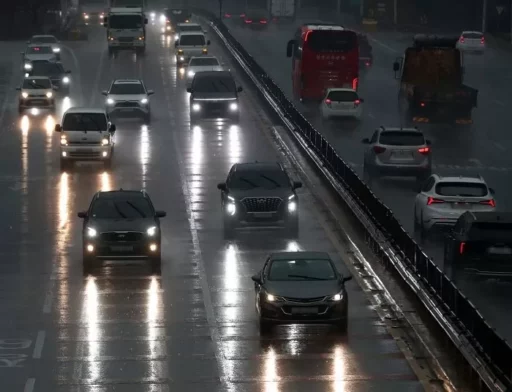July Rainy Road Traffic Accidents, Non-Compliance with Safe Driving Obligations as Main Cause
The Ministry of Interior and Safety emphasized the importance of adhering to traffic regulations while driving in the rain ahead of the monsoon season in July.
On the 26th, the ministry urged thorough compliance with traffic regulations for safe driving during July, which typically sees the highest annual rainfall.

According to data from the Korea Meteorological Administration and the Traffic Accident Analysis System (TAAS) of the Korea Road Traffic Authority, the average number of rainy days in July over the past five years (2020-2024) was 15.8 days, meaning more than half of the month experiences rainfall.
During this period, there were 3,029 traffic accidents on rainy roads, the highest recorded for the year.
An analysis based on time showed that the number of accidents began to gradually increase from 10 AM, peaking around 9 PM with the most accidents (13%) happening during that time.
The main causes of accidents by regulation violation were primarily attributable to non-compliance with safe driving obligations, such as lack of attention to the road ahead, accounting for 55%. This was followed by running a red light (13%) and not maintaining a safe distance (10%).
Non-compliance with safe driving obligations, such as lack of attention to the road ahead, accounted for 55%
Increased Safety Awareness Required While Driving in Rain
The Korea Road Traffic Authority emphasized that higher awareness and adherence to safety practices are needed on rainy days compared to normal conditions.
In particular, driving in the rain at night poses the challenge of inadequate visibility, and reflections from lights make it even harder to distinguish road boundaries. Additionally, puddles, potholes, and protrusions on the road become difficult to see, creating significant dangers.

To prevent traffic accidents in rainy conditions, it is important to reduce speed when passing through intersections, and especially when making right turns, drivers should always come to a complete stop when the traffic signal for the vehicle ahead is red, checking for pedestrians before proceeding based on road conditions.
Furthermore, on rainy roads, vehicles are more likely to skid due to hydroplaning, and braking distance becomes longer than usual, making it crucial to drive at reduced speeds compared to the regulations.
During nighttime rainy conditions, it is essential to avoid sudden braking on slippery surfaces, and most importantly, it is vital to strictly obey traffic laws.
The visibility of drivers is limited due to rain on windshields, and with slippery road conditions, actions that distract the driver, such as using a mobile phone, should be avoided.
Jiman Seok, the head of the Prevention and Safety System Division at the Ministry of Interior and Safety, urged, "Please adhere more strictly to traffic regulations on rainy days, reduce your speed compared to usual, and practice yielding to ensure everyone's safety."
Image source: News1

![[Breaking News] Special Investigation on Rebellion “Yoon Seok-yeol Refuses to Enter Investigation Room… Attempted to Resume Afternoon Investigation but Raised Issues”](https://wordkorean.com/wp-content/uploads/2025/06/thumbnail-858.webp)
